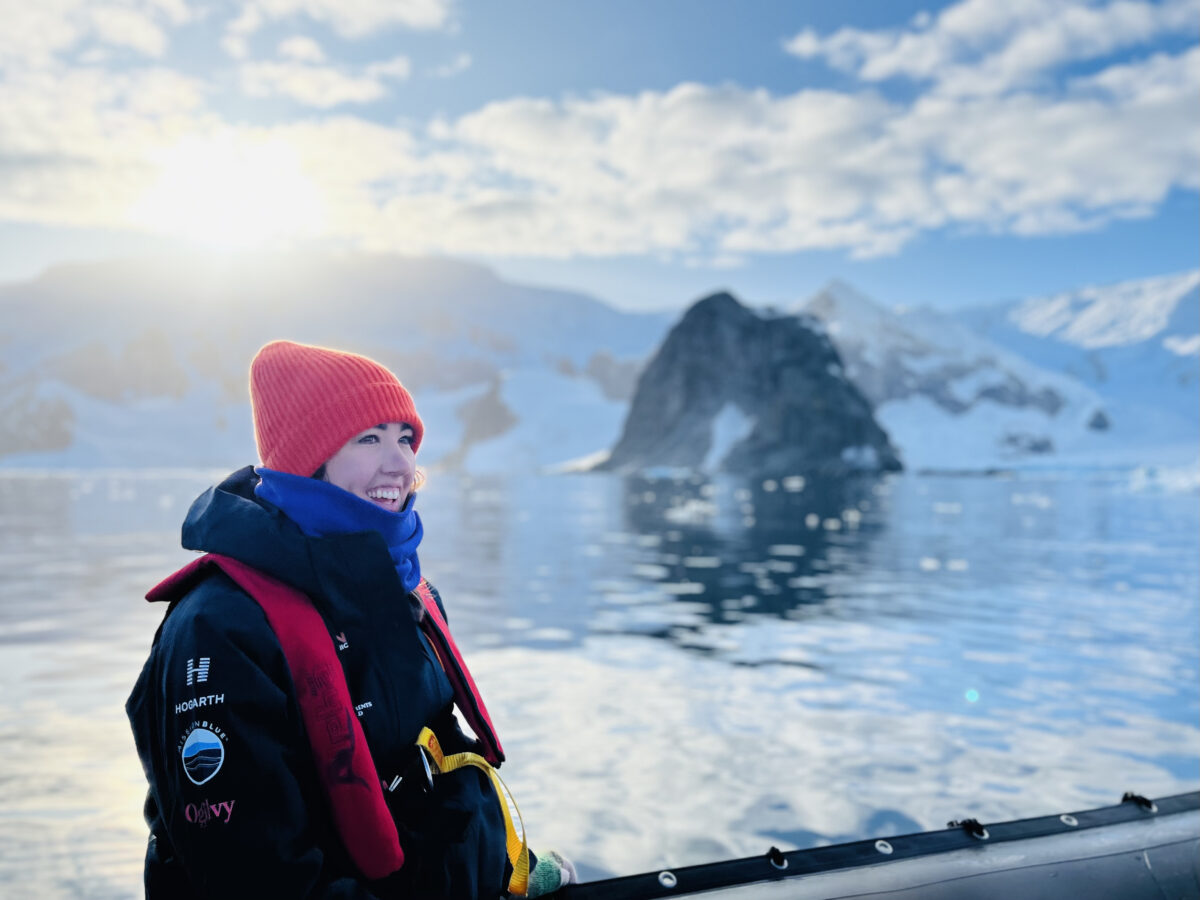
What is wrong with this image? I was having an incredible day surrounded by lovely people, getting my first glimpse of icebergs, penguins and whales! What could possibly be wrong? The sea was calm and the sun was shining, a beautiful summer day in Antarctica.
However, since I was born, Antarctica has lost more than 3.2 trillion tonnes of ice and it continues to lose a volume of ice equivalent to the size of two Titanics every 10 seconds.
Seen as one of the most hostile, it is in fact the most fragile continent in the world.
This austral summer I joined an expedition to Antarctica with Dr. Sylvia Earle and Ocean Geographic on the ACE 2023 voyage. The aim of the expedition was to create a list of resolutions that would help to mitigate the climate crisis, facilitate several groups of researchers conducting science in Antarctica and also to create a series of images and a short film to tell the story of Antarctica and raise awareness about why we should all care about what happens there.
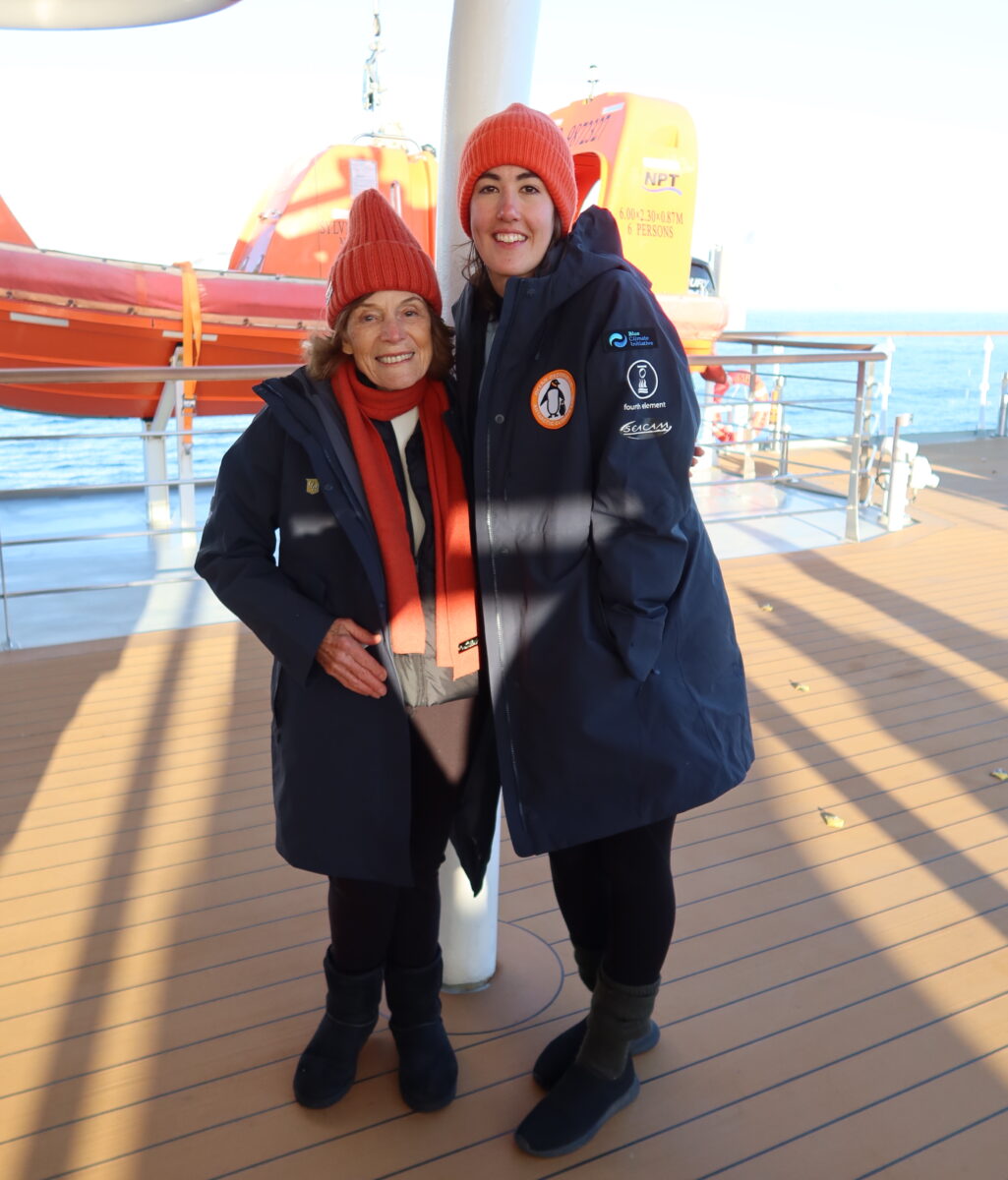
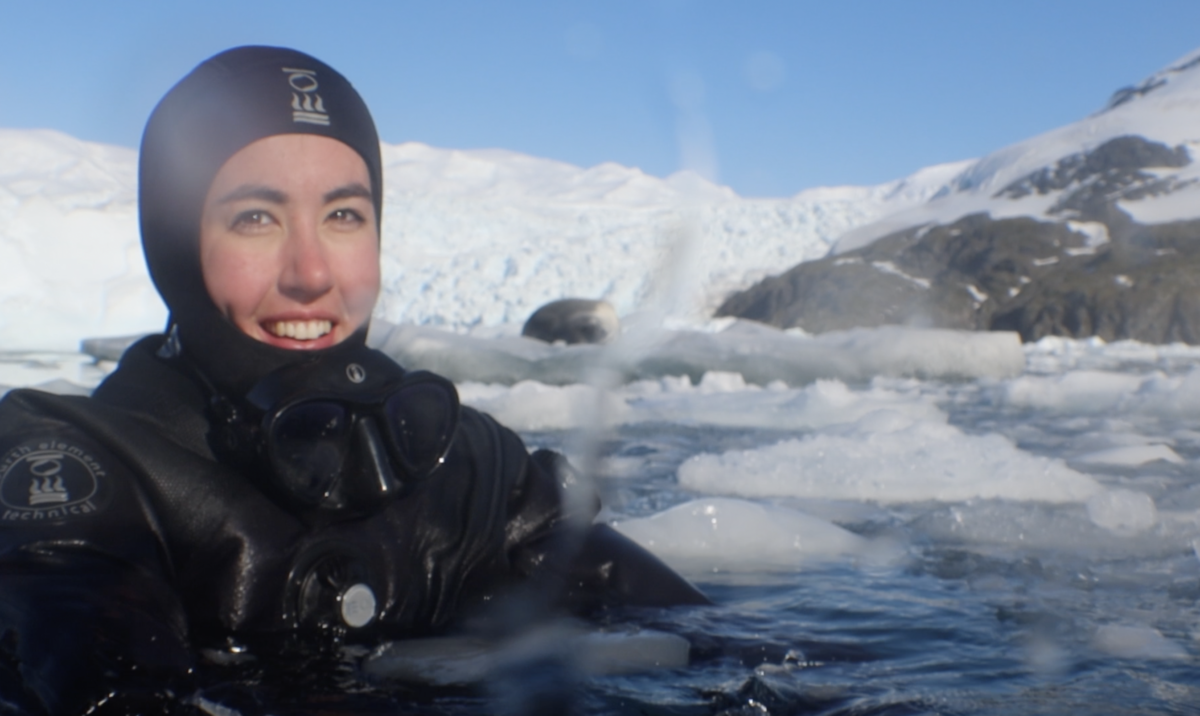
The expedition team gathered in Ushuaia, Argentina otherwise known as “El Fin del Mundo” as it is the southernmost city in the world. It was interesting to be at ‘the end of the world’ and yet be intending to sail even further south, crossing the Drake Passage and then hundreds more nautical miles beyond.
This voyage would be the christening of the M/V Sylvia Earle, a vessel named after one of the most influential Ocean scientists and conservationists of our time. Along with Sylvia herself, the expedition was joined by a host of influential wildlife filmmakers, scientists and climate activists.
I never in my life thought I would visit such a remote corner of our earth, let alone go there in such elevated company. It was an immense privilege to be among their number.
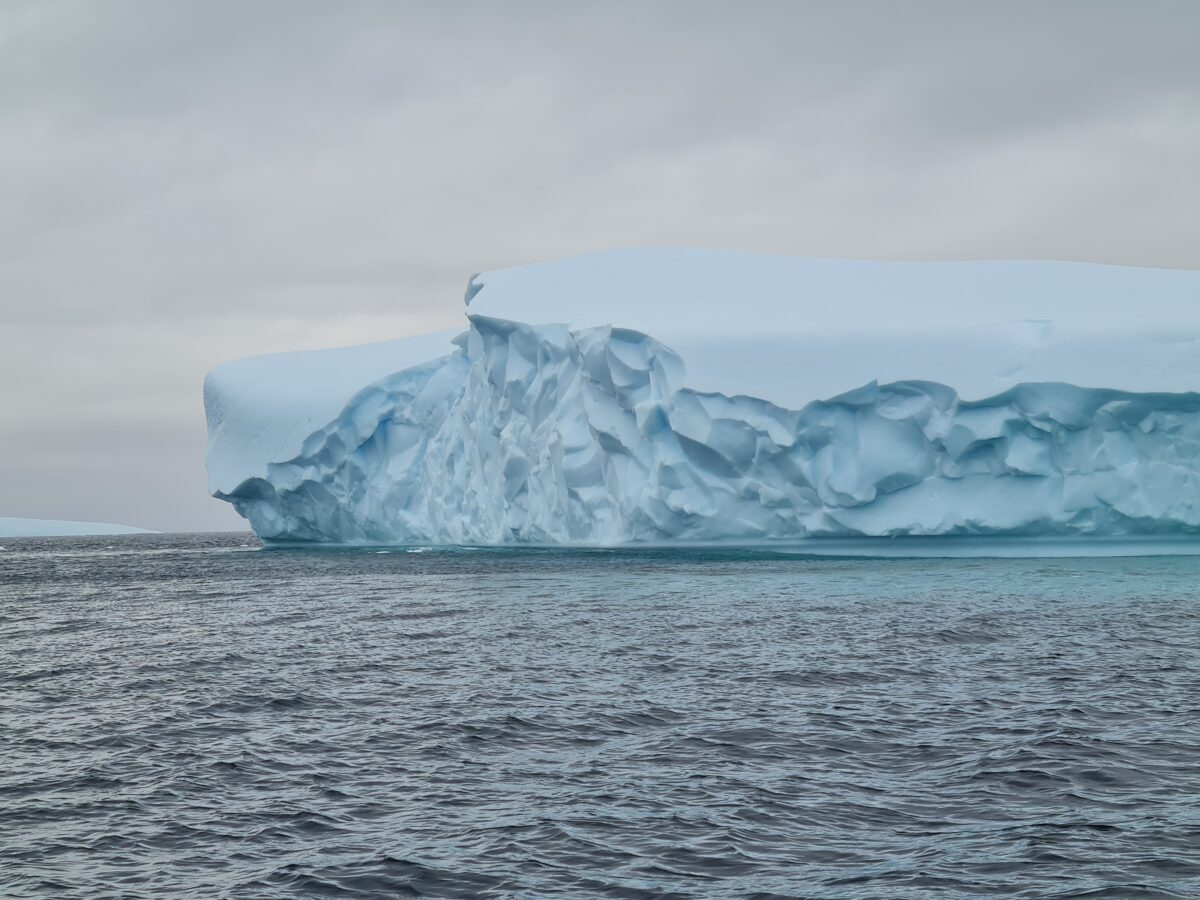
There were two key research projects during the expedition: a cetacean monitoring project and a micro plastic sampling project. I was fortunate to get to spend some time with both teams during the expedition as well as several science story tellers, photographers and videographers. It was incredible to get to meet so many people working on the forefront of climate change research and communications.
We passed through the waters around the Western Antarctic peninsula where a large krill population resides and were blessed almost everyday with sightings of a wide variety of whales. During the voyage we recorded a total of 126 whales: 106 humpback, 12 fin, five minke, one pilot whale and two orca.

I had the pleasure of joining the cetacean research team with Prof. Olaf Meyenke and Dr. Lauren Harrell monitoring the local whales and their feeding behaviours. All types of humpback methods of feeding were recorded during the expedition, including bubble net, lunge and subsurface feeding and several humpback feeding hotspots were located.
One morning we woke at 4am to get kitted up and head out for whale monitoring just as the sun was beginning to rise over our glaciated surroundings. The air was so still that even out on the Zodiacs you could see your breath rise in chilled steam in front of you. It was an Antarctic summer’s day and despite the glacial waters surrounding the boat the black rubber hull was warmed by the sun. The surface of the ocean in the bay was like a mirror, the glistening face of each sculptural iceberg floating above its own reflection. We all sat searching the horizon in every direction for the tell-tale plume of steam from a whale’s breath or ‘blow’. After around 30 minutes someone yelled, having spotted a blow further into the bay. Our captain Ashley swung the boat around and we headed towards where the tall plume of vapour hung in the air.
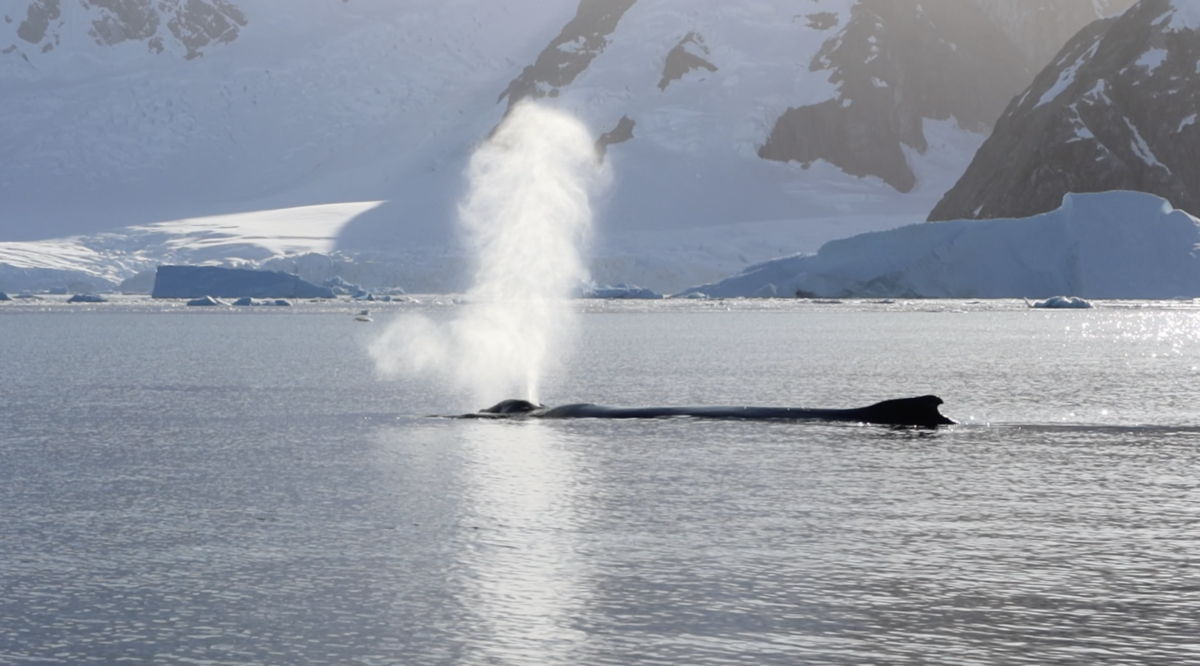
The Zodiac slowed as we got closer and we glided through the area where vapourised whale breath. The smell was like nothing I had ever experienced before, a deep, organic, musty odour. The realisation that I was in that moment breathing in the exhalation of a humpback whale felt like sharing a magical moment of intimacy and connectivity with a creature that I had read so much about and seen photos of but never before encountered up close.
After learning so much about free-diving this year it was amazing to then witness this majestic creature completing what free-divers might describe as a ‘breathe up’ before it fluked or lifted its gargantuan tale to dive down to the bottom of the bay.
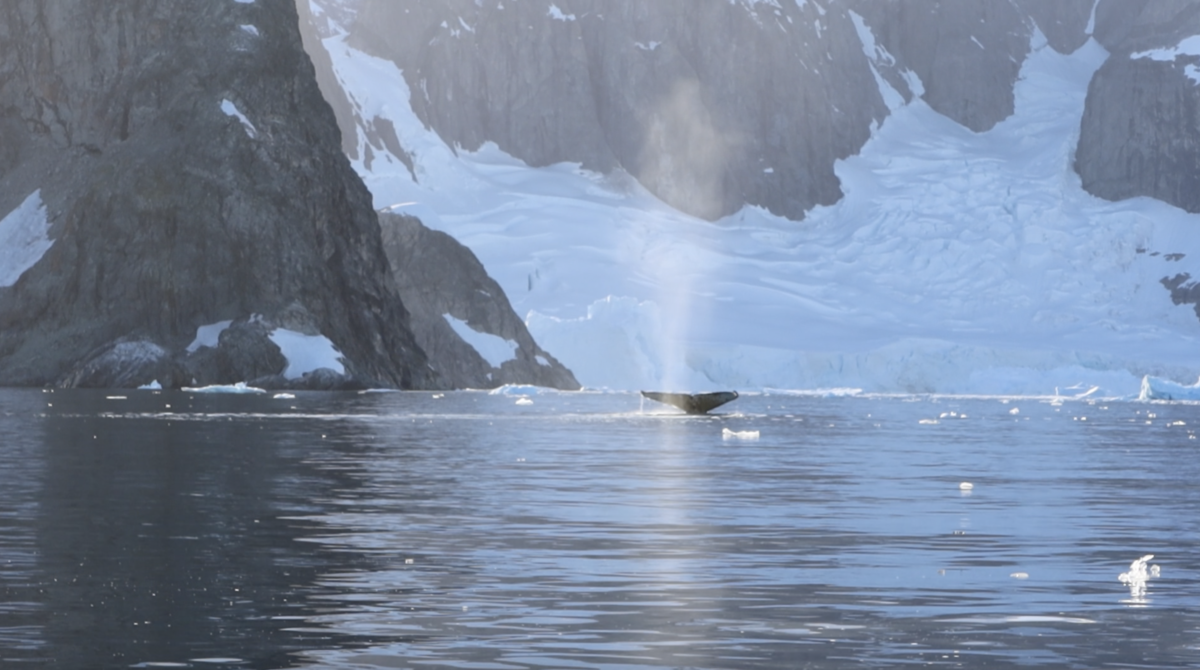

We had two tagging attempts and then the drone was lifted into the air to get the size and condition status of the whale. It turned out to be a young male humpback with a healthy body weight.
I would love to think that this whale is happy and healthy and will live out its days peacefully wandering the ocean. However, during this trip I also witnessed the heartbreaking devastation of micro-plastics, krill fishing and boat strikes from tourist vessels which all are directly impacting these gentle giants.
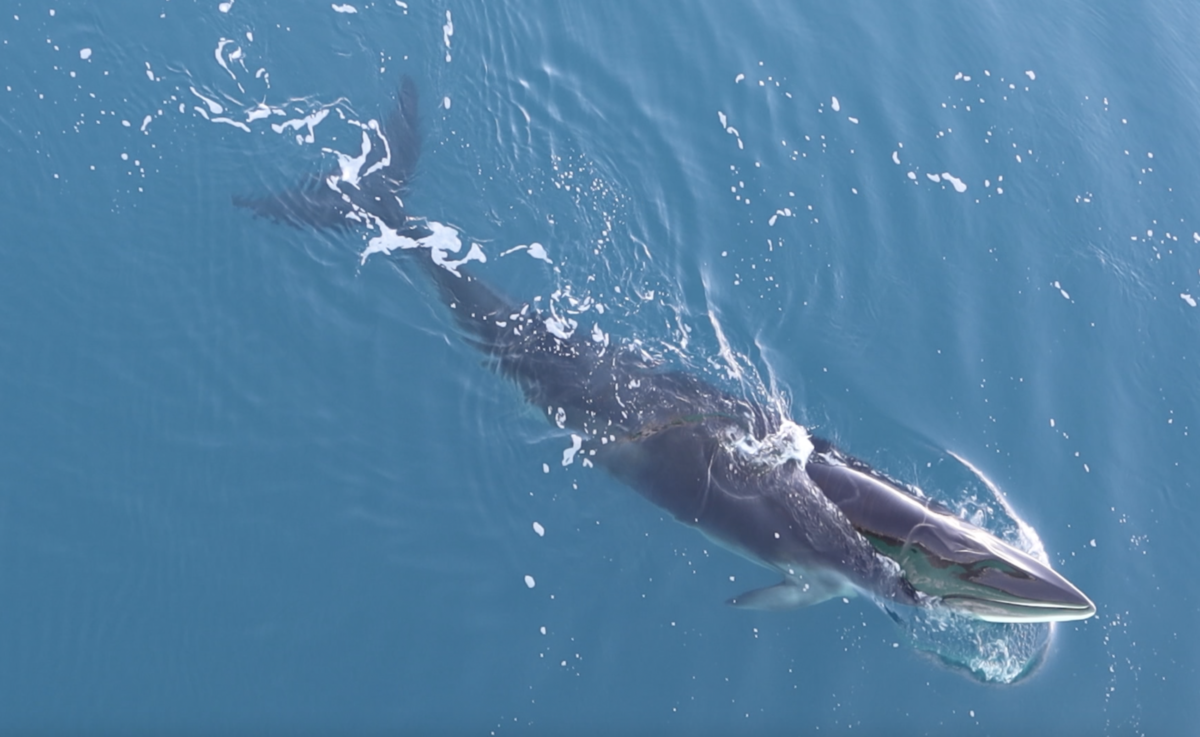
When I was in my first year of university, one of my professors opened a lecture stating that in 2050 there will be more plastic than fish in our oceans by weight… This statement and the truth of it has been ringing uncomfortably in my ears ever since. Although this area of marine science can often be quite a painful one to study, it is incredibly vital to research as we are barely beginning to understand the impacts of it on the health of our oceans as well as our own human health.
For this reason, I was very glad to be able to join Alex Rose and Chloe Dubois out on the Zodiac for micro-plastic trawling during the trip. They were using a Neuston net with a fine mesh (300µm), similar to those used for plankton trawls to collect particles from the surface layer of sea water in areas where whales were known to be feeding. Sadly as baleen whales are filter feeders, they may become some of the most impacted by microplastics as they sieve massive quantities of water with every mouthful. It was heartbreaking to be in such a remote location and watch as the trawls came up each day and every single sample contained microplastics.
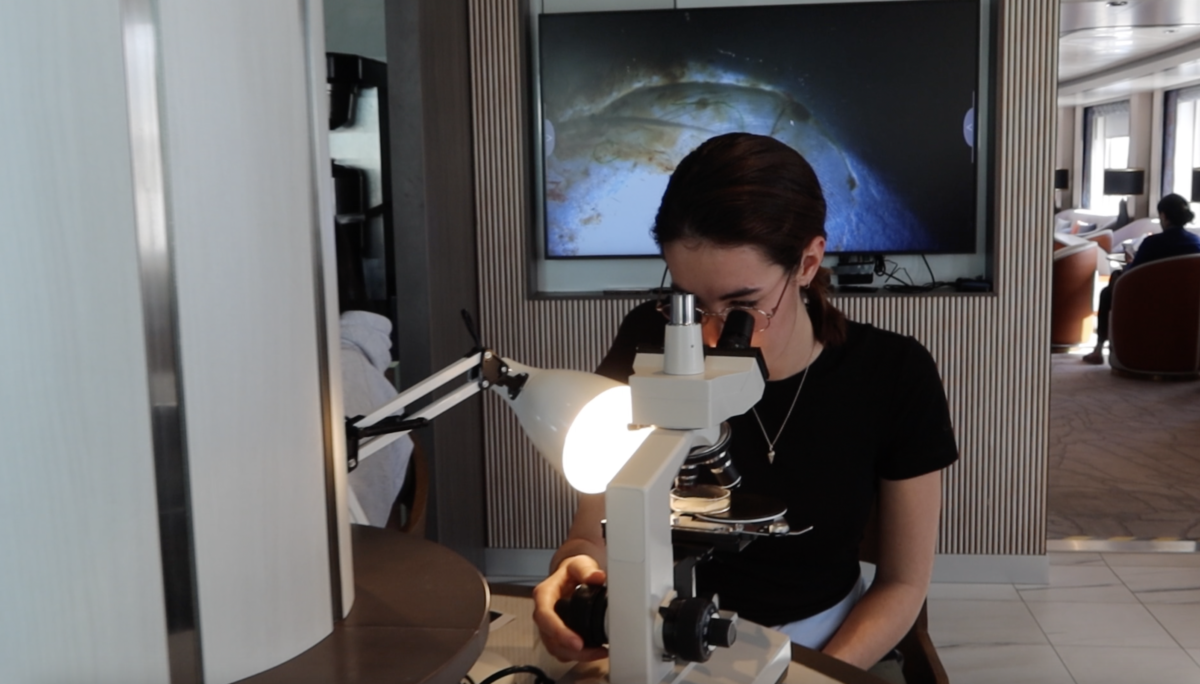

The samples from the Neuston net were filtered using 15-20 µm filter paper, a ceramic funnel and ethanol wash in the lab on board the ship. Preliminary analysis was done on board during the expedition, it was striking to see so many microplastic fibres wrapped around penguin feathers and in the stomach of krill.
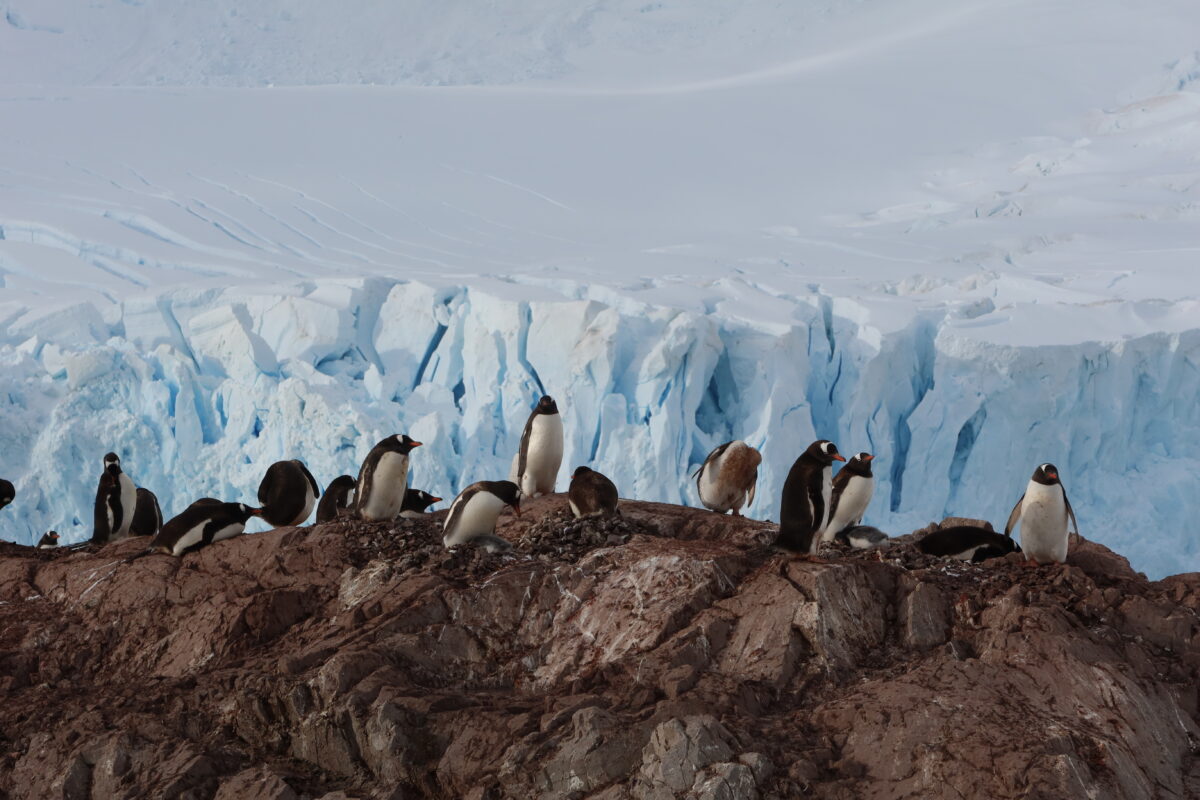
During the voyage we had a series of talks, lectures and discussions with all of the researchers, climate activists and storytellers aboard the vessel. In one of the group discussions Sylvia Earle asked the question, why do we say ‘seafood’ and not ‘sealife’? She is right, in the terrestrial world we have long since realised how damaging it can be to hunt and kill wildlife and yet we catch the wildlife of the sea and measure our catches in thousands of tonnes. It is hard to quantify the impact of this, particularly in the High Seas where catch is often poorly regulated.
Witnessing the innocent purity of the wildlife in Antarctica has made me realise how far we have disconnected from this type of natural habitat in the majority of the modern world.
The idea of shifting baselines came up again and again during my time in Antarctica. This concept was described by Daniel Pauly as “A gradual change in the accepted norms for the condition of the natural environment due to past information or experience of past conditions.”
There are so many dangers associated with shifting baselines, those assigning fishing quotas tend to use percentages of current stocks, not what the fish stocks were 80 years ago. Krill fishing in Antarctic waters has a direct impact on the entire ecosystem. All of the animals here depend on krill stocks, seals, penguins and whales alike. Krill may seem like a bizarre thing to be fishing for but it is of huge economic value, primarily used as fish food for farmed fish stocks, fish oil and pet food. Many people would suggest that krill fishing is not a problem because those that fish krill have yet to reach their maximum quota as the quotas are so enormous. However this gap in the amount of krill being caught and the amount that is allowed to be caught is seen by many companies as a massive economic opportunity and many operations are increasing their intake over the past few years. Since 2007 the amount of krill taken out of Antarctic waters has quadrupled, while due to climate change populations have decreased and shifted location, impacting local wildlife.

During the voyage I learned that the Thwaite’s glacier is thought of as the central tipping point of the Antarctic. This specific glacier is currently preventing a massive ice sheet from collapsing into the ocean. If the Thwaite’s glacier melts and breaks away, it will essentially unclog a massive ice river allowing it to flow into the ocean. The melting of this West Antarctic Ice Sheet will cause sea level to rise by 3.2m, which would not only have impacts on the global ocean transport system but also would mean many cities would flood like Shanghai, New York, Miami, Tokyo and Mumbai.
As much as I enjoyed my time in Antarctica and feel incredibly grateful and humbled to have been able to join the expedition, I left the continent having had my eyes opened to what is occurring there and the fragility and time pressure of the situation.

It was my first time in this magical place and with no other experiences to compare it to I could have continued in my own ignorance thinking all was well and as it should have been. Luckily though, my 2023 perspective is not our baseline for Antarctica and through the scientists that work there I was informed that the slushy snow and rain I saw is not normal. So many penguin chicks born too late in the season to survive is not normal. The rapidly retreating glaciers dropping into the sea in front of us and beaches free of ice is not normal. Green and pink algae covering wide expanses of snow is not normal and neither is microplastics in every sample normal… I am grateful to those that work so hard in these remote areas to gather data and study what is happening there because without them these baselines would continue to shift and we would continue to move forward with our naïve ideas of progress until we have destroyed the last few truly wild places on earth.
I hope that in my lifetime we can turn things around. I asked Sylvia Earle how she continues to hope in the face of everything and she told me that hope is the most powerful thing we have to stop what is happening.
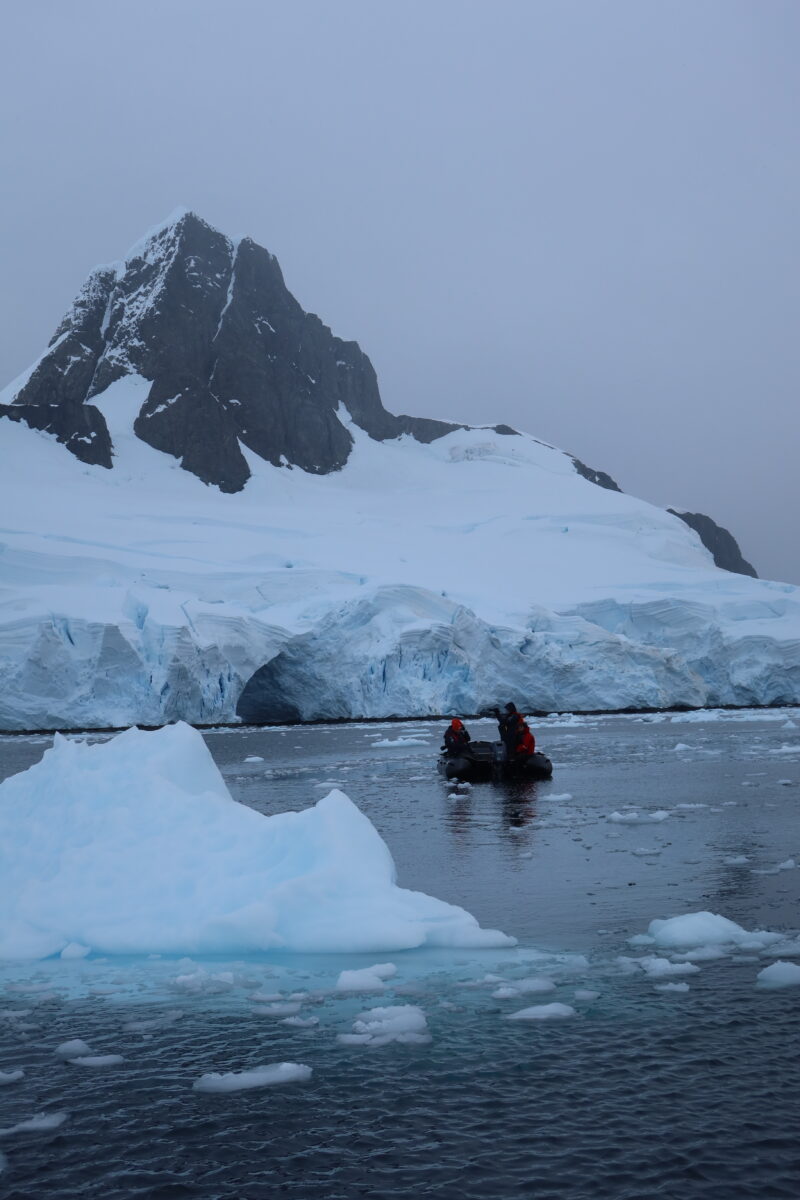
Thank you so much to the Ocean Geographic team for giving me this opportunity of a lifetime and thank you to all of the incredible and passionate people that I met on the voyage.
Thank you to Rolex and OWUSS for making dreams come true. Also thank you to my incredible equipment sponsors Fourth Element, Suunto, Halcyon Divesystems, Reef Photo and Video, Nauticam and Reel Diving.
